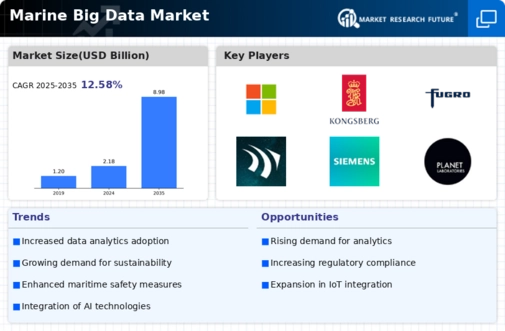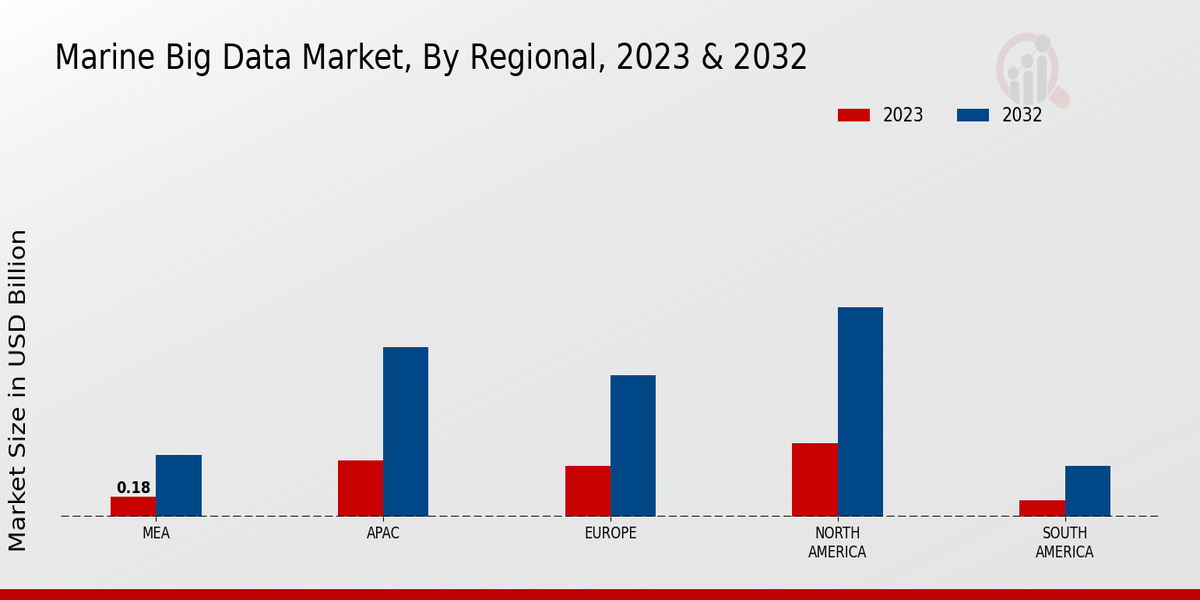Government Initiatives and Regulations
Government initiatives and regulations play a pivotal role in shaping the Global Marine Big Data Market Industry. Many countries are implementing policies aimed at improving marine resource management and environmental protection. For instance, regulations mandating the use of data-driven approaches for monitoring marine ecosystems are becoming more prevalent. This regulatory framework encourages investment in marine data analytics and technology, fostering innovation and collaboration among stakeholders. As governments recognize the value of data in achieving sustainable development goals, the market is likely to witness robust growth, with a projected CAGR of 13.74% from 2025 to 2035.
Increased Investment in Marine Research
The Global Marine Big Data Market Industry is benefiting from increased investment in marine research initiatives. Research institutions and private entities are allocating substantial resources to explore marine ecosystems, climate change impacts, and biodiversity conservation. For example, collaborative projects between governments and research organizations are utilizing big data analytics to enhance understanding of ocean dynamics. This influx of funding not only supports scientific advancements but also drives the demand for sophisticated data analytics tools and platforms. As research efforts intensify, the market is poised for growth, aligning with the broader trend of prioritizing marine science and technology.
Advancements in IoT and Sensor Technologies
The Global Marine Big Data Market Industry is significantly influenced by advancements in Internet of Things (IoT) and sensor technologies. These innovations enable the collection of vast amounts of data from various marine environments, including oceanographic data, weather patterns, and marine biodiversity. For example, smart buoys equipped with sensors can relay critical information about water quality and temperature, which is essential for marine research and resource management. As these technologies become more affordable and accessible, the market is expected to expand, potentially reaching 8.98 USD Billion by 2035, driven by the increasing reliance on data for informed decision-making.
Rising Demand for Sustainable Fishing Practices
The Global Marine Big Data Market Industry is experiencing a surge in demand for sustainable fishing practices. As global fish populations decline, stakeholders are increasingly relying on data analytics to monitor fish stocks and optimize fishing efforts. For instance, the integration of satellite data and machine learning algorithms allows for real-time tracking of fish movements, which aids in the development of sustainable quotas. This shift not only supports environmental conservation but also enhances economic viability for fishing communities. By 2024, the market is projected to reach 2.18 USD Billion, reflecting the growing emphasis on sustainability in marine resource management.
Emergence of Predictive Analytics in Marine Operations
The Global Marine Big Data Market Industry is witnessing the emergence of predictive analytics as a transformative tool for marine operations. By leveraging historical data and advanced algorithms, stakeholders can forecast marine conditions, optimize shipping routes, and enhance safety measures. For instance, shipping companies are increasingly using predictive models to anticipate weather patterns and avoid potential hazards at sea. This proactive approach not only reduces operational costs but also minimizes environmental impact. As the demand for efficiency and safety in marine operations grows, the market is likely to expand, driven by the adoption of predictive analytics.

























Leave a Comment